During the upcoming Paris Art Week, Opera Gallery in Paris will present a monographic exhibition dedicated to Jean Dubuffet (Le Havre, 1901 - Paris, 1985), entitled Jean Dubuffet, L’Hourloupe et son sillage (1962-1982). The exhibition, which runs from Oct. 16 to Nov. 12, 2025, coincides with the 40th anniversary of the artist’s death and offers an opportunity to review the scope of his production related to the L’Hourloupe series and the cycles that began from it. The exhibition brings together works created over a 20-year period, focusing in particular on the L’Hourloupe series, developed between 1962 and 1974, considered one of the most important stages in Dubuffet’s career. In addition to major works from the series, the exhibition includes works from Coucou Bazar, Roman burlesque, Sites tricolores, Crayonnages, Récits, Conjectures, Parachiffres, Mondanités, Lieux abrégés, Théâtres de mémoire, Psycho-sites and Sites aléatoires, highlighting the artist’s evolutionary path in the years following L’Hourloupe.
L’Hourloupe stems from marks traced with a ballpoint pen during telephone conversations, a type of automatic drawing that Dubuffet used to explore cellular forms composed of red and blue backgrounds, hatches and white spaces bordered by thick black lines. The cycle represents a break with previous series and introduces a systematic working method by which the artist decomposes reality to reveal a new dimension. In a note dated May 7, 1968, the artist described L’Hourloupe as “a total abstraction from the everyday natural world in order to feed the gaze only with his own mental elaborations.” The exhibition thus explores the tension between construction and deconstruction of reality, figuration and abstraction, matter and language, confirming the innovative scope of the artist’s production of the last twenty years.
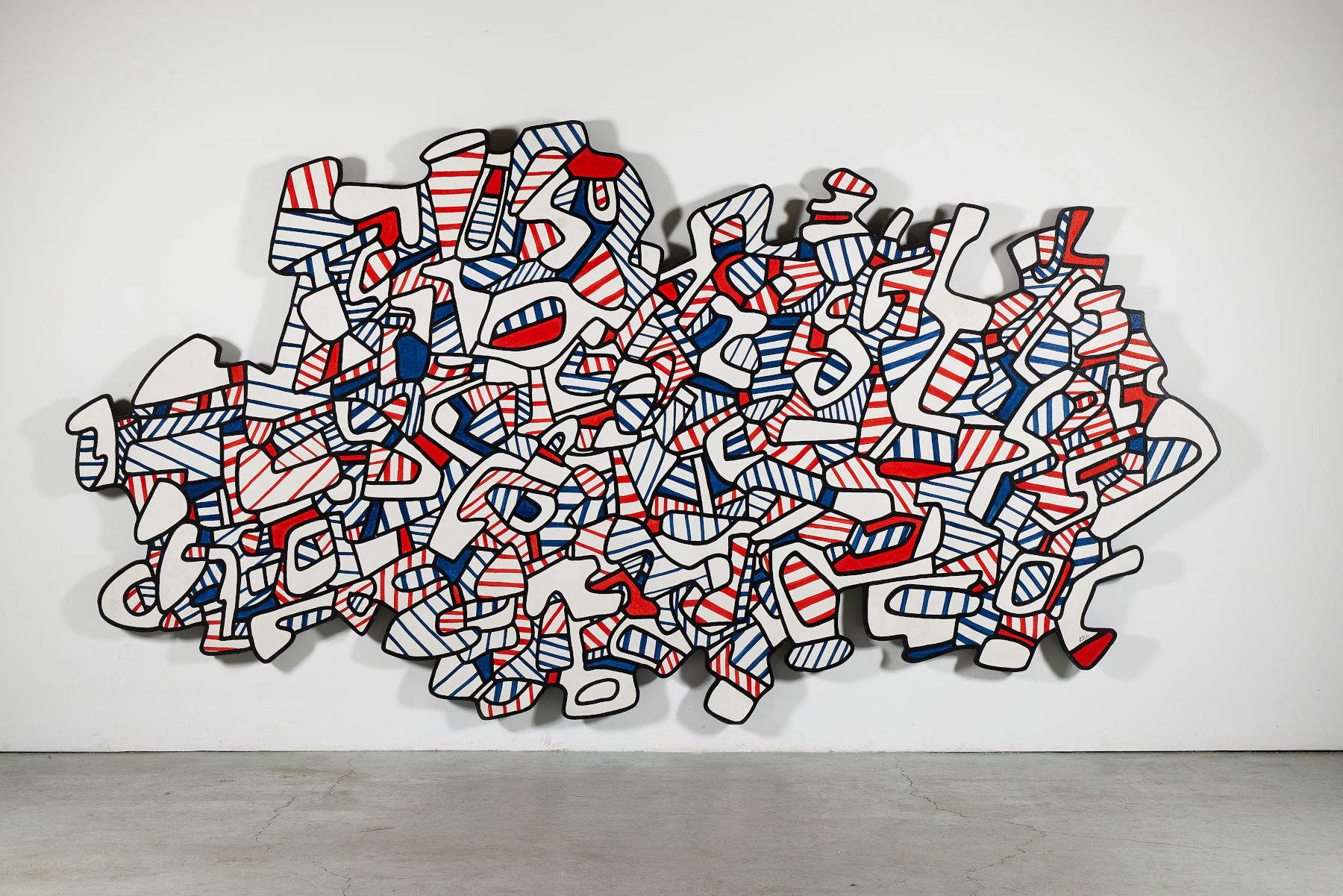
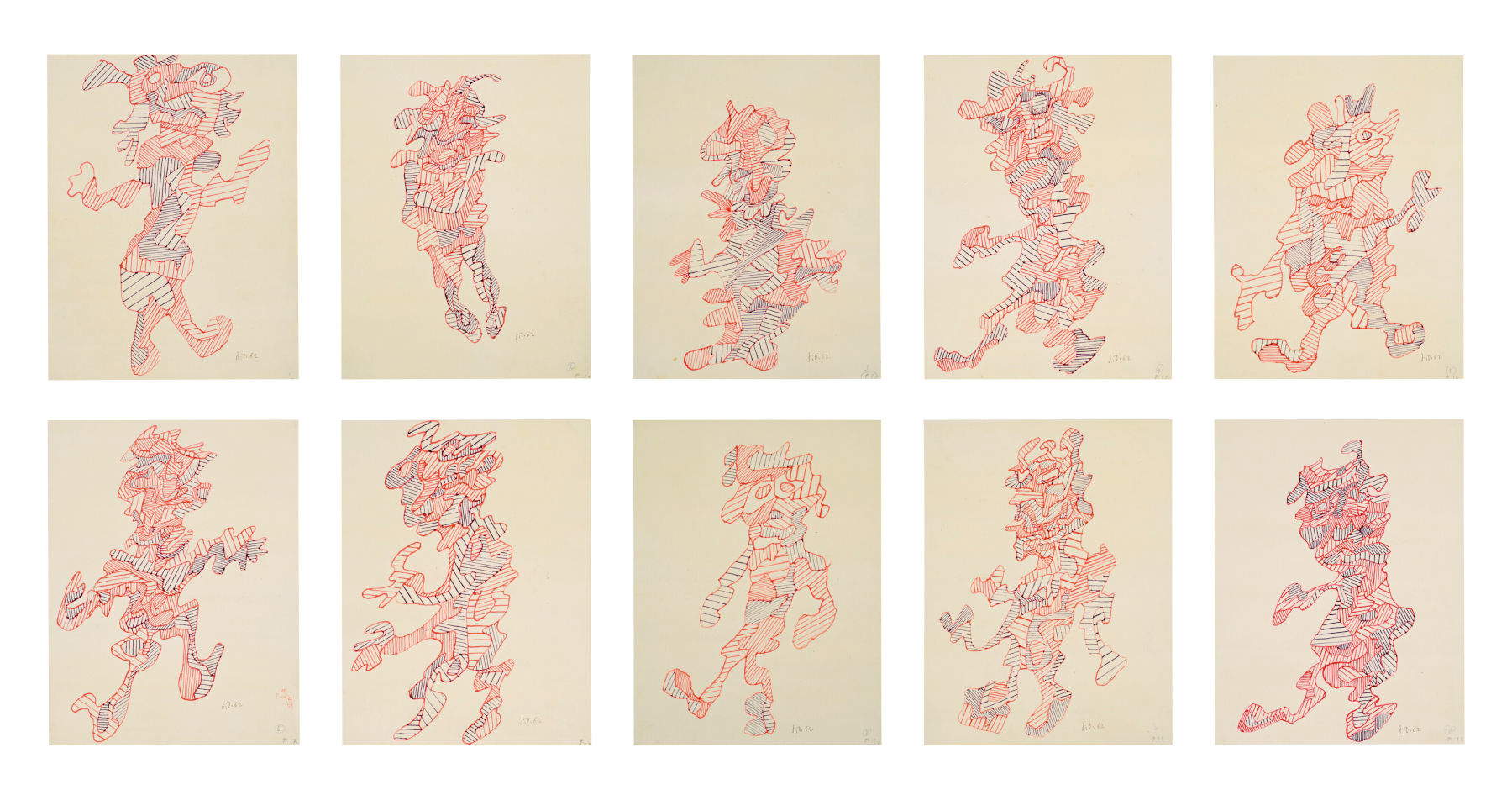
Prominent among the works on view is Échec à l’être (1971), one of 175 large Practicables originally made for Coucou Bazar, Dubuffet’s performance piece first presented at the Guggenheim Museum in 1973. The hour-long performance combined painting, sculpture and live theater, with costumed actors and dancers among painted scenic elements, bringing theHourloupe figures to three-dimensionality. The exhibition also includes works such as Site au Défunt (1982), belonging to the Sites aléatoires series, in which the artist returned to the practice of collage and cutout, anticipating characters on paper treated with white paint, maintaining the aesthetic continuity of the Psycho-sites, populated by childlike and identical figures, interpretable as ideograms rather than direct references to reality.
For Opera Gallery, Dubuffet also embodies a radical and innovative vision that fits into the gallery’s curatorial core. “Dubuffet’s work reflects the true DNA of Opera Gallery,” says Marion Petitdidier, director of Opera Gallery Paris. “We have long been committed to reconsidering the postwar French canon and connecting it to contemporary sensibilities. Its radical language, experimentation with materials and rejection of convention are themes we constantly return to.”
The exhibition is part of Paris Art Week, a major moment in the international art calendar and coinciding with Art Basel, reinforcing Paris’ role as a center of dialogue between postwar and contemporary. Opera Gallery had already hosted Dubuffet in 2021 with the exhibition Bal des Figures. With the new exhibition dedicated toHourloupe, the gallery thus confirms its continued focus on postwar French art and its desire to present works by key figures of the 20th century, maintaining an open dialogue between history and contemporary experimentation.
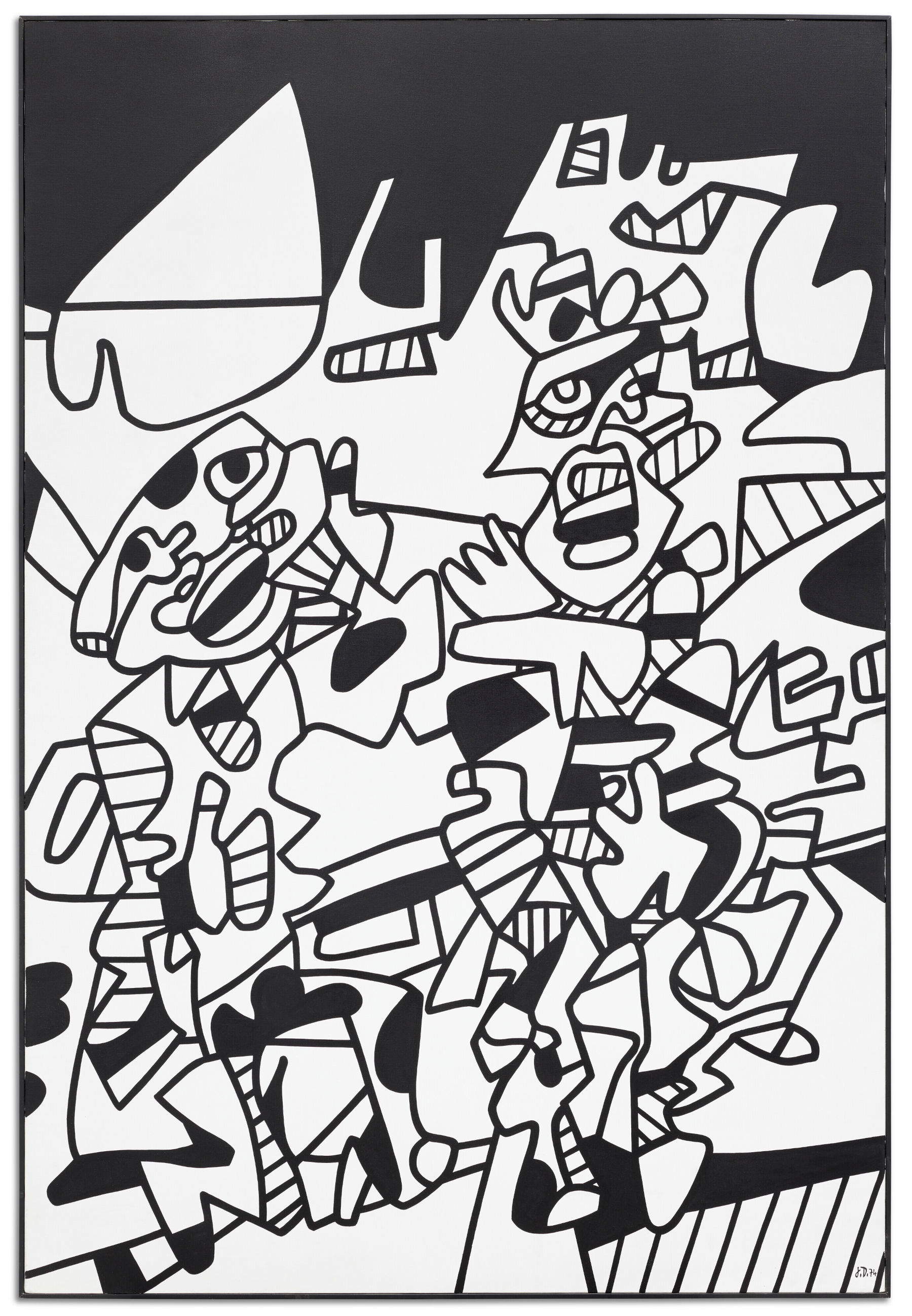
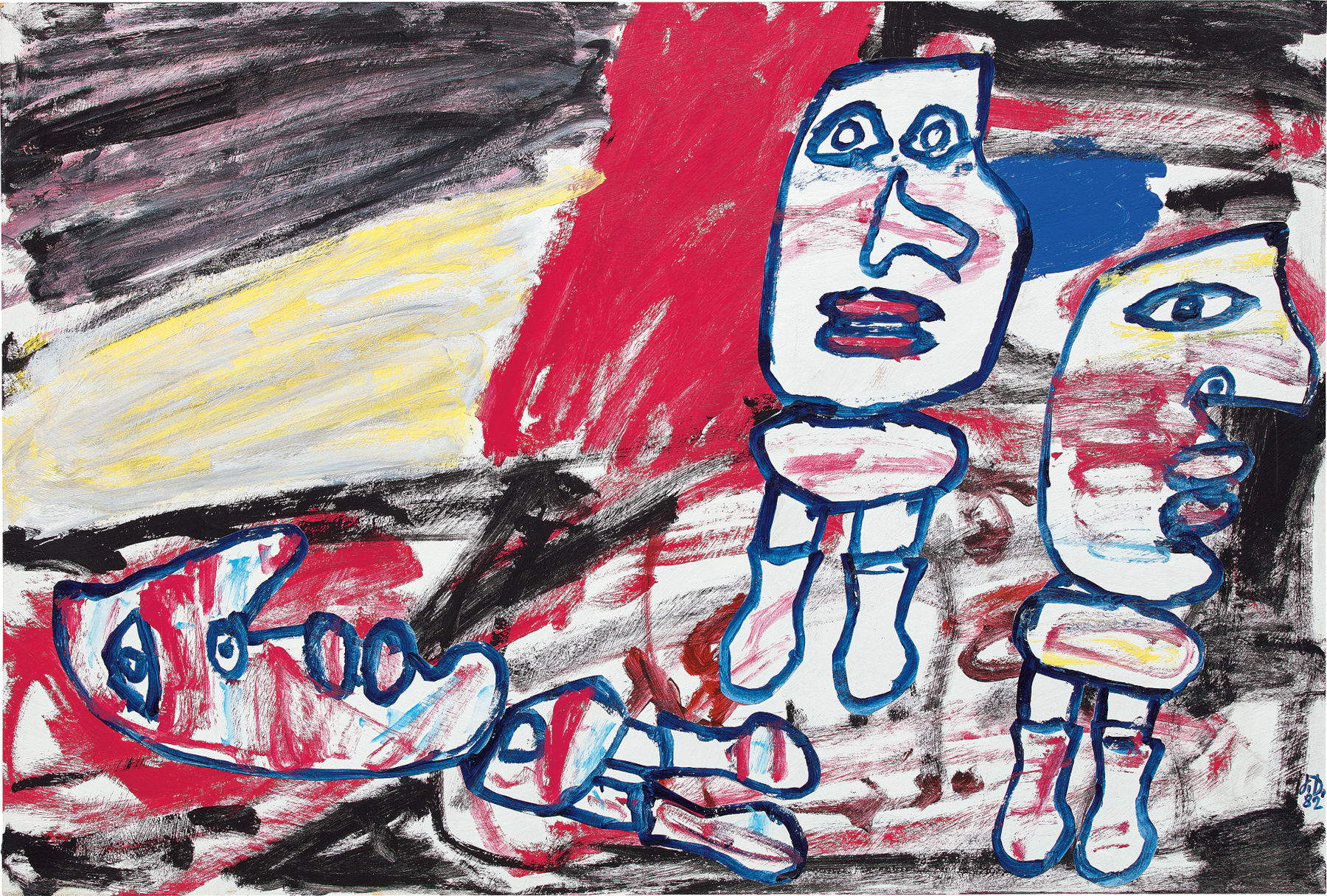
Jean Dubuffet, born in Le Havre in 1901, is universally recognized as the founder of the Art Brut movement. Over the course of his career of some forty years, he rejected traditional artistic standards, valuing the works of outsiders, including children and psychiatric patients, judged to be more authentic and expressive. His production is characterized by a rough, primitive style and the use of unconventional materials such as sand, tar and pebbles. Dubuffet’s unconventional approach profoundly influenced postwar art and continues to exert a significant influence on contemporary artists. The artist’s works have been shown in hundreds of solo exhibitions worldwide and are part of more than 60 international public collections, including Art Institute of Chicago, Centre Pompidou in Paris, Fine Arts Museums of San Francisco, LACMA, Metropolitan Museum of Art in New York, and Tate in London.
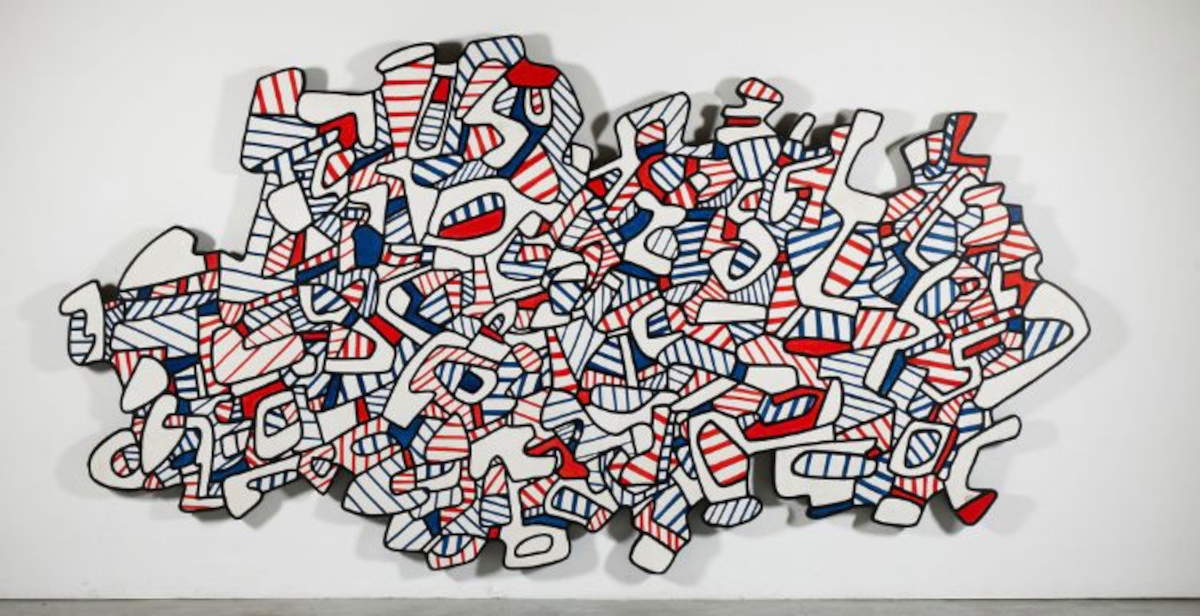 |
| Jean Dubuffet, L'Hourloupe on exhibition in Paris to mark 40th anniversary of death |
Warning: the translation into English of the original Italian article was created using automatic tools. We undertake to review all articles, but we do not guarantee the total absence of inaccuracies in the translation due to the program. You can find the original by clicking on the ITA button. If you find any mistake,please contact us.